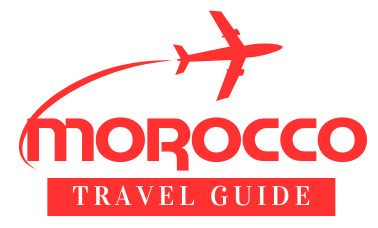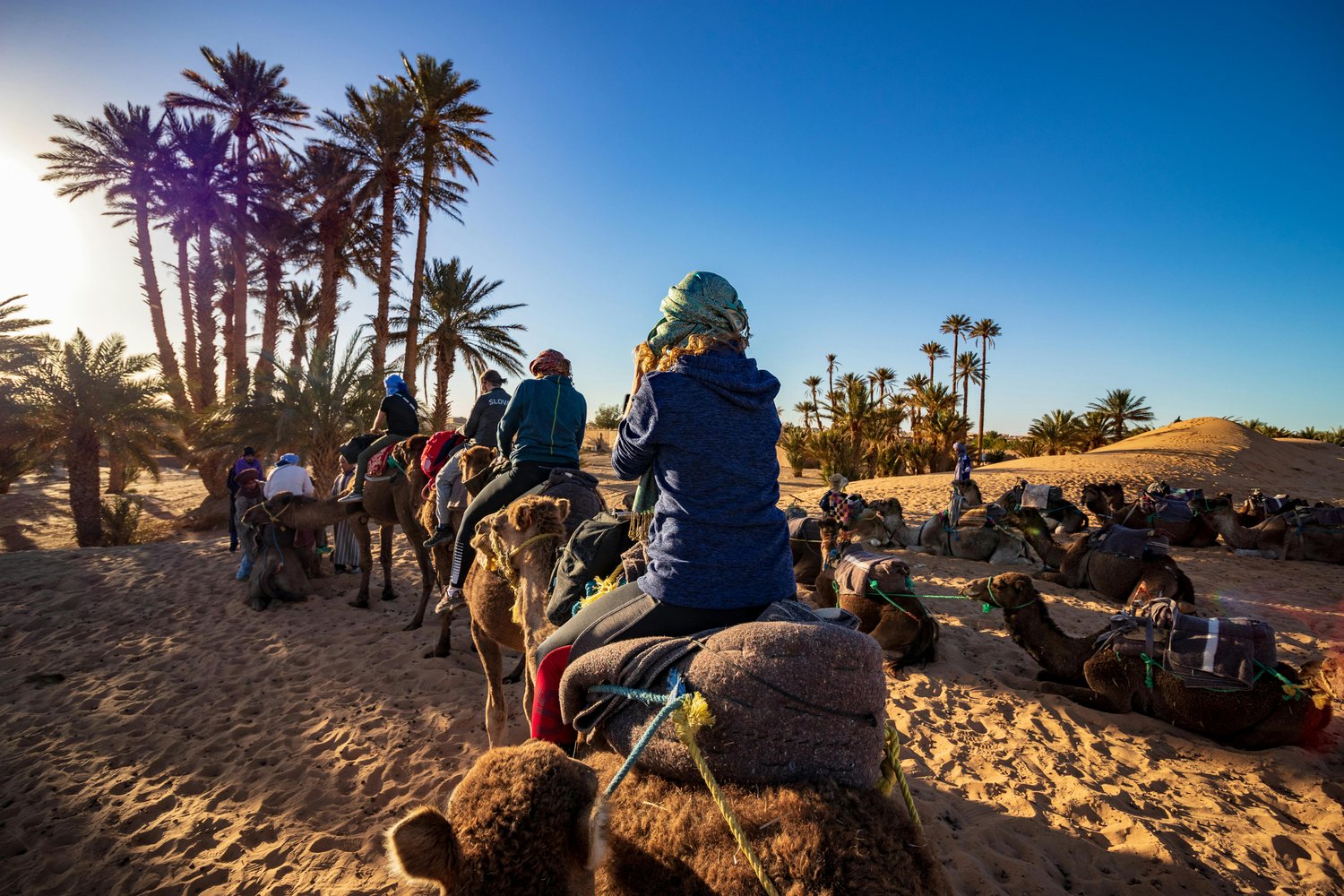Camel Ride in the Moroccan Desert — Sahara Adventure
There are few experiences in travel as timeless and enchanting as mounting a camel and swaying across the golden dunes of the Sahara Desert. Morocco, with its accessible yet authentic desert landscape, offers one of the world’s most captivating camel trek experiences. The Moroccan desert tour, particularly through the majestic sand seas of Merzouga and Erg Chebbi, provides travelers with an unforgettable journey that connects them to centuries of nomadic tradition and the breathtaking vastness of North Africa’s desert landscape.
“If you would like to explore Morocco in greater depth, I recommend checking out this [digital guide about Morocco] https://payhip.com/MoroccoTravelGuide. Please note that this is an affiliate link, which means I may earn a small commission at no extra cost to you.”
The Allure of the Sahara Camel Trek
The Sahara Desert stretches across northern Africa like a vast ocean of sand, and Morocco holds the keys to its western gateway. A camel ride in Morocco is not merely a tourist activity but a step back in time to when these “ships of the desert” were the only reliable means of traversing these challenging terrains. The rhythmic sway of the camel’s gait, the infinite horizons of undulating dunes, and the profound silence of the desert create an almost meditative experience.
The Merzouga camel ride experience centers around the stunning Erg Chebbi dunes, towering formations of fine orange-gold sand that reach heights of up to 150 meters. Unlike manufactured tourist attractions, these natural wonders shift constantly with the desert winds, ensuring no two visits are ever quite the same. As your camel caravan winds through this surreal landscape, the modern world fades away, replaced by the timeless patterns of desert life.
What to Expect on Your Moroccan Desert Tour

A typical desert adventure in Morocco begins in small frontier towns like Merzouga, which serve as launching points into the Sahara. Here, experienced guides — often from families with generations of desert knowledge — will introduce you to your camel companion. Don’t be intimidated by their imposing size or occasional grunts of protest as they lower themselves for mounting; these intelligent creatures have been selectively bred for centuries for their docility and endurance.
The actual camel ride requires no previous experience. Your guide will demonstrate the proper technique for mounting and dismounting (hold on tight during both!), and how to sit comfortably during the journey. The distinctive rolling motion of a camel’s walk takes some adjustment — lean slightly back when they ascend dunes and forward when they descend to maintain balance.
Most Sahara camel treks follow a similar structure:
- A late afternoon departure to avoid the midday heat
- A gentle journey across the dunes, typically lasting 1–2 hours
- Arrival at a desert camp before sunset
- An evening of traditional Berber meals, music, and stargazing
- Optional sunrise camel ride the following morning
The sunset camel ride in Morocco deserves special mention. As the sun begins its descent, the entire desert transforms. The sand shifts through a remarkable palette of colors — from bright gold to deep orange, then rich crimson, and finally a cool blue as twilight settles. Photographers treasure this time for the extraordinary play of light and shadow across the dunes.
Connecting with Berber Culture Experience

The Berber people (who prefer the term Amazigh, meaning “free people”) have navigated these desert regions for millennia, developing rich traditions perfectly adapted to this challenging environment. Your Erg Chebbi camel tour will likely be led by Berber guides whose ancestors have followed these same routes for countless generations.
The evening spent at a desert camp provides the deepest immersion into Berber culture. Traditional cuisine features tagines (slow-cooked stews named after the conical earthenware pots they’re prepared in), fluffy couscous, and sweet mint tea ceremonially poured from height to create a frothy top — a sign of hospitality. After dinner, guides often share music around the campfire, playing traditional instruments like the three-stringed hajhuj and hand drums.
This cultural exchange represents one of the most valuable aspects of the Morocco travel adventure. Many visitors report that conversations with their Berber hosts — discussing everything from ancient navigation techniques to desert astronomy — remain their most cherished memories long after returning home.
Best Times for a Sahara Desert Adventure
The Sahara experiences extreme temperature variations that significantly impact the comfort of your camel trek. The ideal seasons for a desert adventure in Morocco are:
Spring (March to May): Comfortable daytime temperatures range from 77–86°F (25–30°C), with cool but not cold nights. Wildflowers sometimes bloom briefly in desert valleys.
Fall (September to November): Similar comfortable temperatures to spring, with particularly clear skies perfect for stargazing.
Summer months (June to August) bring potentially dangerous daytime heat exceeding 104°F (40°C), while winter nights (December to February) can drop below freezing. If traveling during these extreme seasons, shorter camel rides and additional precautions are essential.
Essential Packing for Your Camel Ride in Morocco
The desert environment demands specific preparation. For your Moroccan desert tour, pack:
- Lightweight, loose-fitting clothing that covers skin (protection from both sun and occasional cool winds)
- Sturdy closed shoes (not sandals) for walking in sand
- Sunglasses, sunscreen, and a wide-brimmed hat
- A warm layer for evenings (even in summer, desert temperatures drop significantly after sunset)
- Headscarf or light shawl (protection from occasional sand breezes and sun)
- Personal water bottle (though guides provide water, having your own is recommended)
- Camera with dust protection
- Small daypack for essentials during the ride
Importantly, pack light for the actual camel trek portion. Your main luggage can typically remain secured at your hotel in Merzouga or with your tour operator while you take only essentials for the overnight experience.
The Transformative Nature of the Journey

Beyond the stunning landscapes and cultural encounters, a Sahara camel trek offers something increasingly rare in our hyperconnected world — genuine disconnection. In the vast silence of the dunes, with no cell service or digital distractions, travelers often experience a profound sense of perspective. The immensity of the desert landscape and the brilliant canopy of stars overhead remind us of our small place in the universe.
Many visitors describe their Merzouga camel ride as unexpectedly meditative. The gentle rocking motion, the soft sound of camel hooves on sand, and the breathtaking vistas create perfect conditions for mindfulness. This combination of physical journey and inner reflection makes the Sahara experience particularly meaningful for many travelers.
Tips for Your Desert Adventure in Morocco

- Book with reputable operators: Research companies with positive reviews focusing specifically on how they treat both clients and camels.
- Consider a private tour: Group experiences can be fun, but smaller or private tours allow for a more personalized experience and flexibility.
- Prepare physically: While not strenuous, camel riding uses unfamiliar muscles. Light stretching after your ride helps prevent soreness.
- Respect cultural norms: Morocco is a moderate Muslim country. Dress modestly, especially when interacting with local communities.
- Learn a few Arabic or Berber phrases: Simple greetings and thanks are appreciated and enhance your connection with guides.
- Negotiate thoughtfully: Prices are often flexible in Morocco, but remember that quality desert experiences require fair compensation for guides, camels, and camp facilities.
- Stay hydrated: The dry desert air increases water loss even when you don’t feel particularly hot.
- Protect your electronics: Fine desert sand can damage cameras and phones. Bring protective cases or simple ziplock bags.
A camel ride in Morocco’s Sahara Desert offers far more than just stunning photos for social media. It provides a genuine adventure connecting travelers to ancient traditions, breathtaking landscapes, and the remarkable cultural heritage of North Africa. Whether swaying across the dunes at sunset or sharing stories with Berber guides under a blanket of stars, this experience promises memories that will last long after the sand is shaken from your shoes.
“If you would like to explore Morocco in greater depth, I recommend checking out this [digital guide about Morocco] https://payhip.com/MoroccoTravelGuide. Please note that this is an affiliate link, which means I may earn a small commission at no extra cost to you.”


